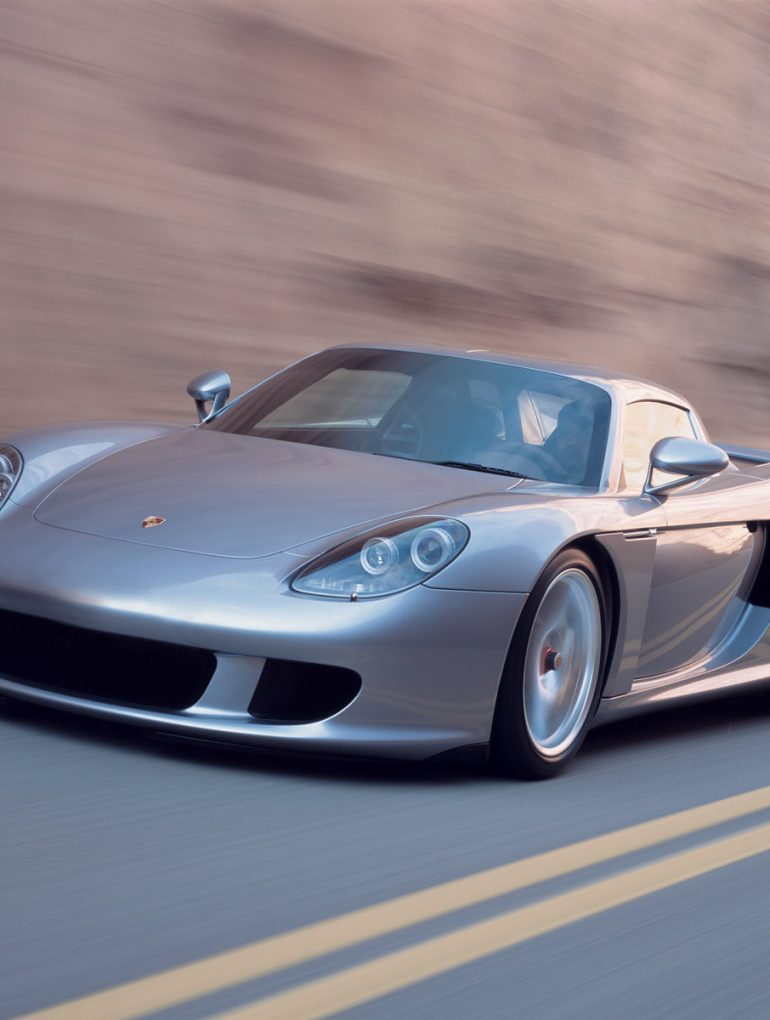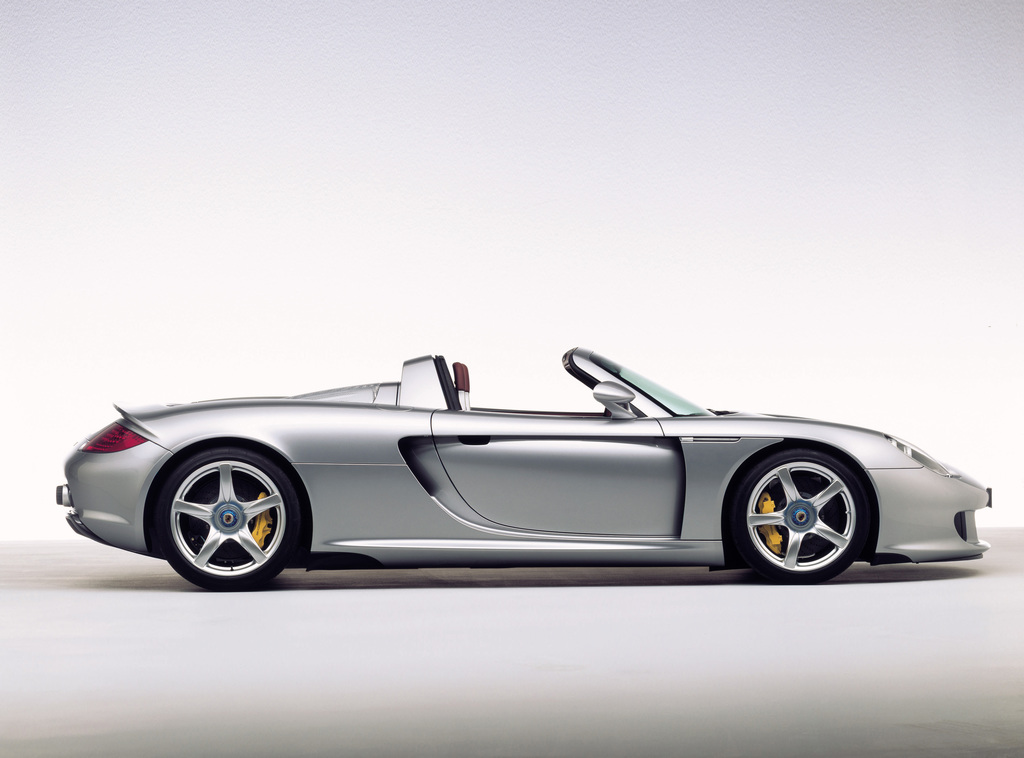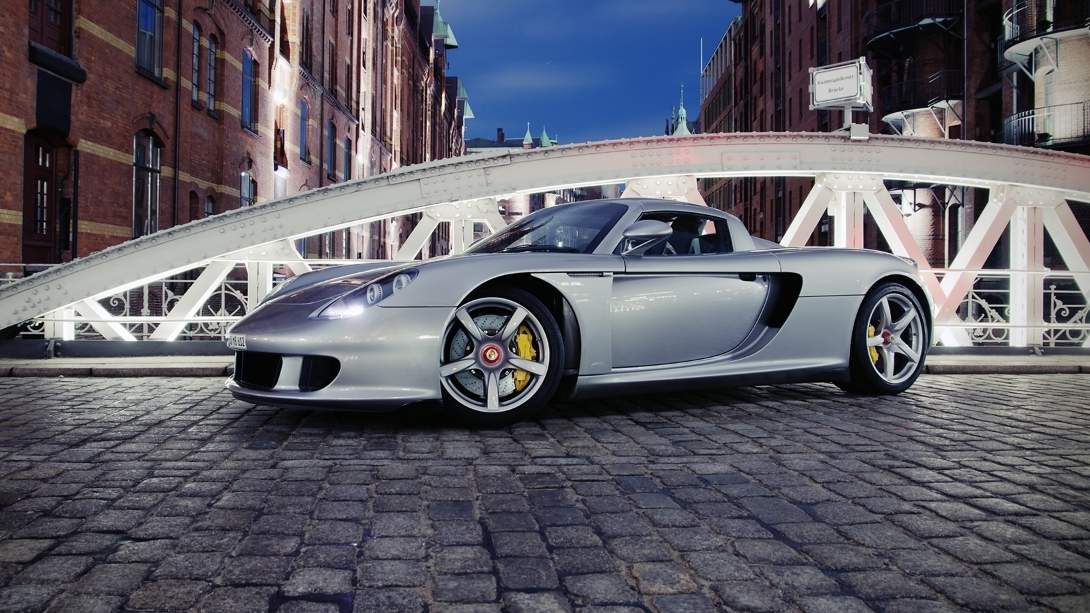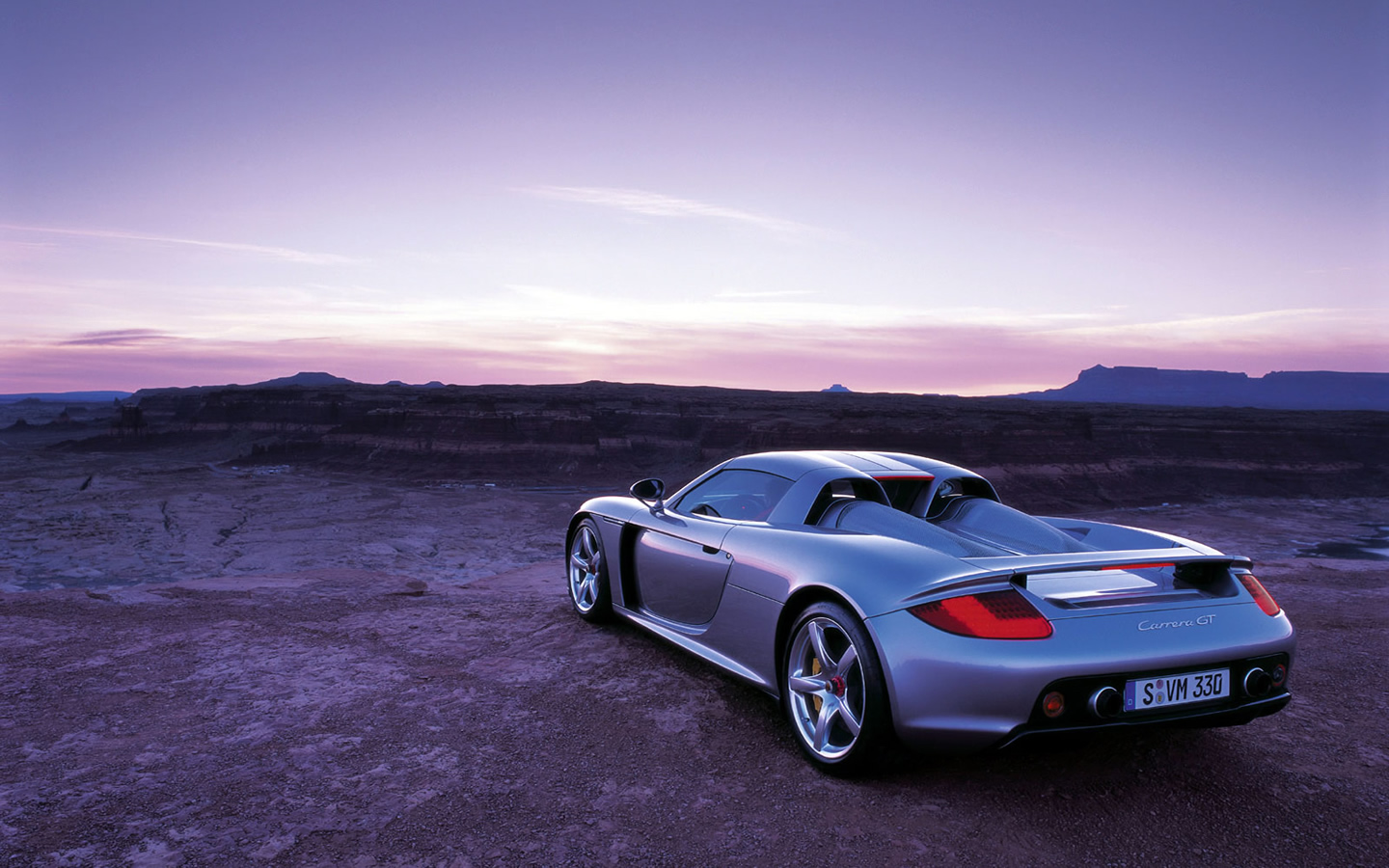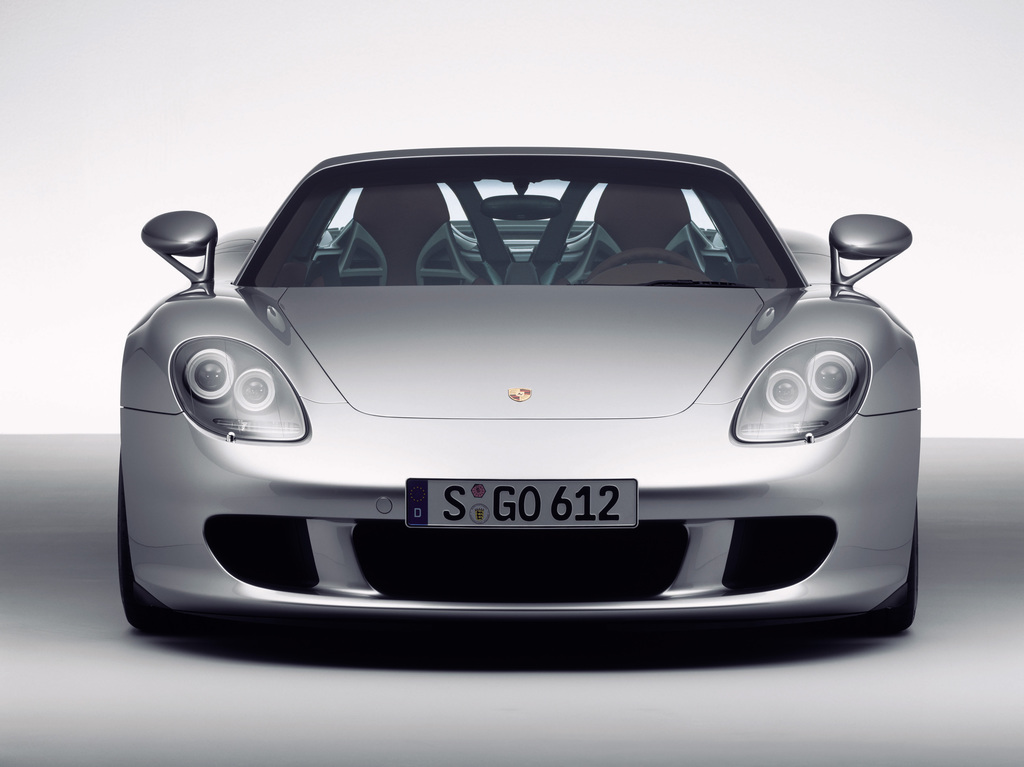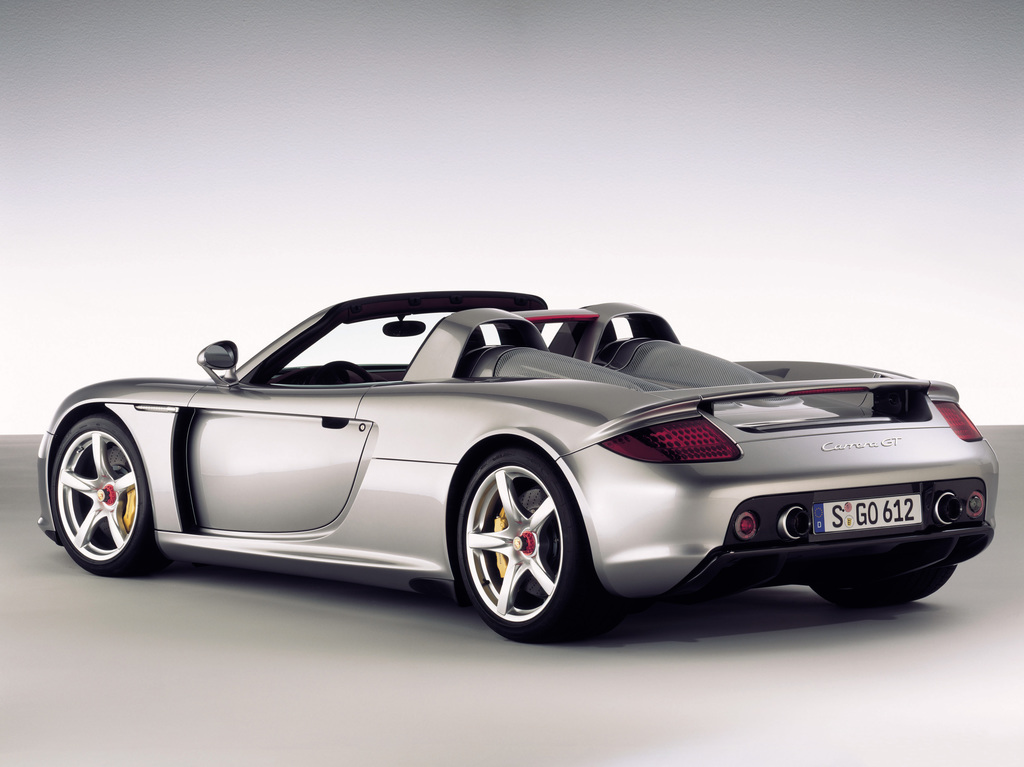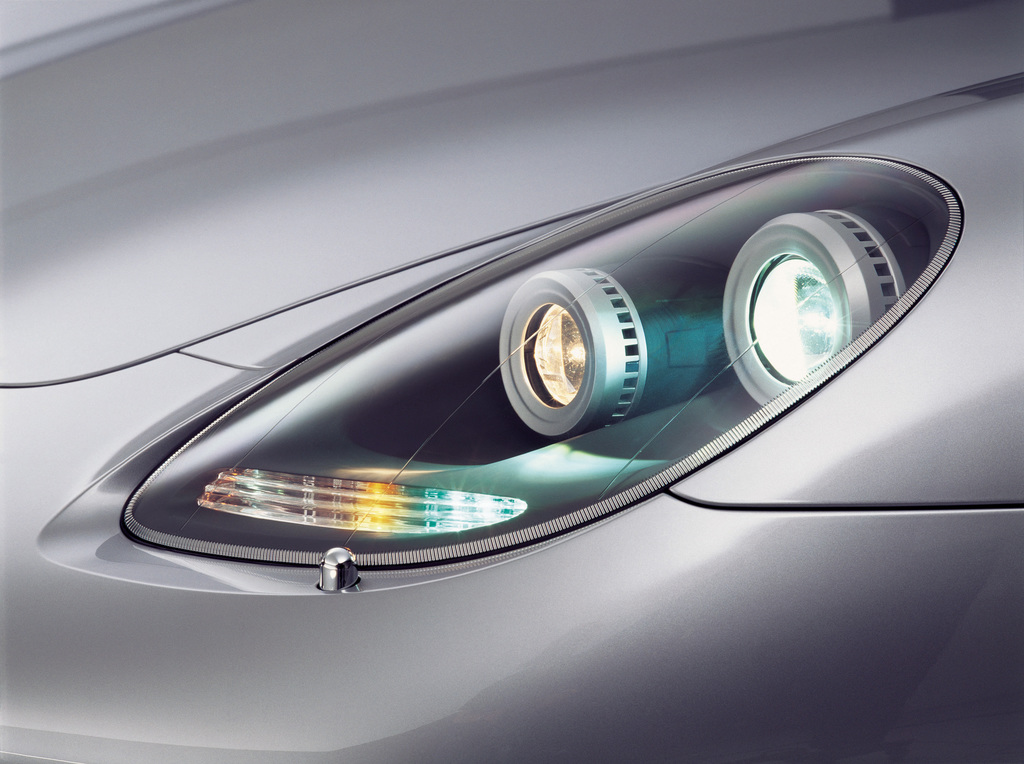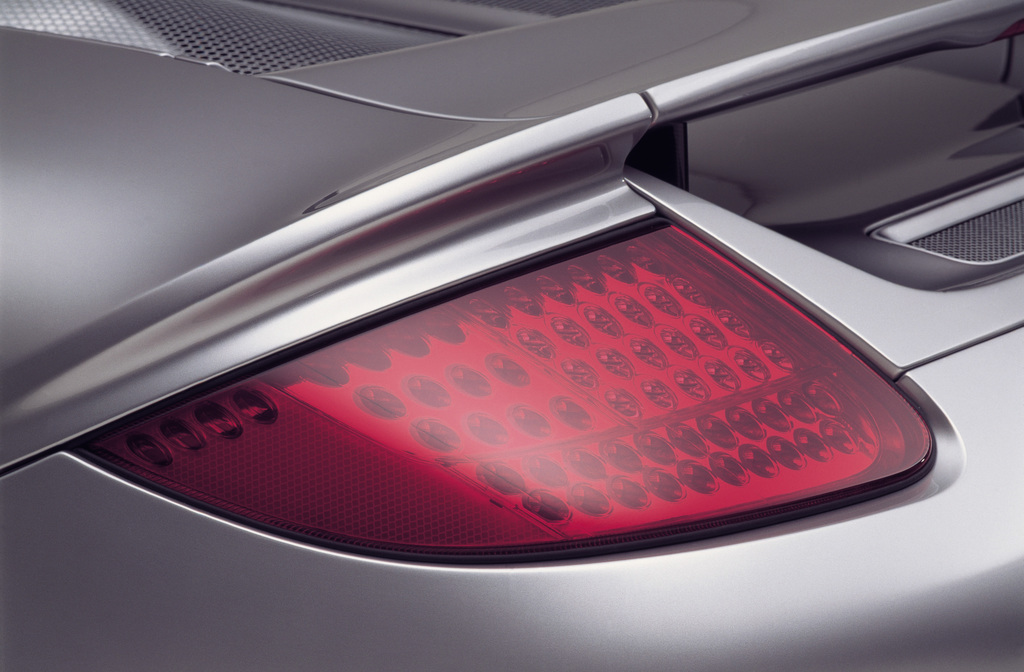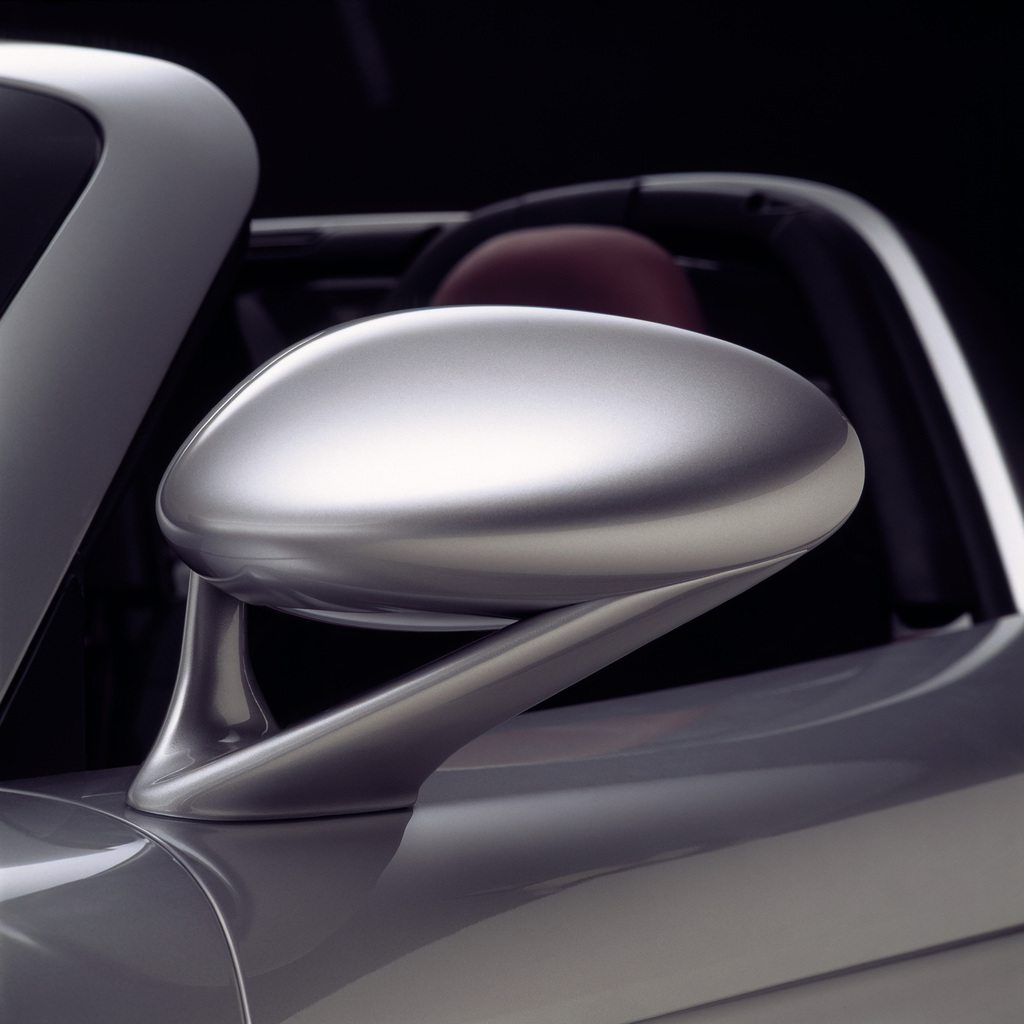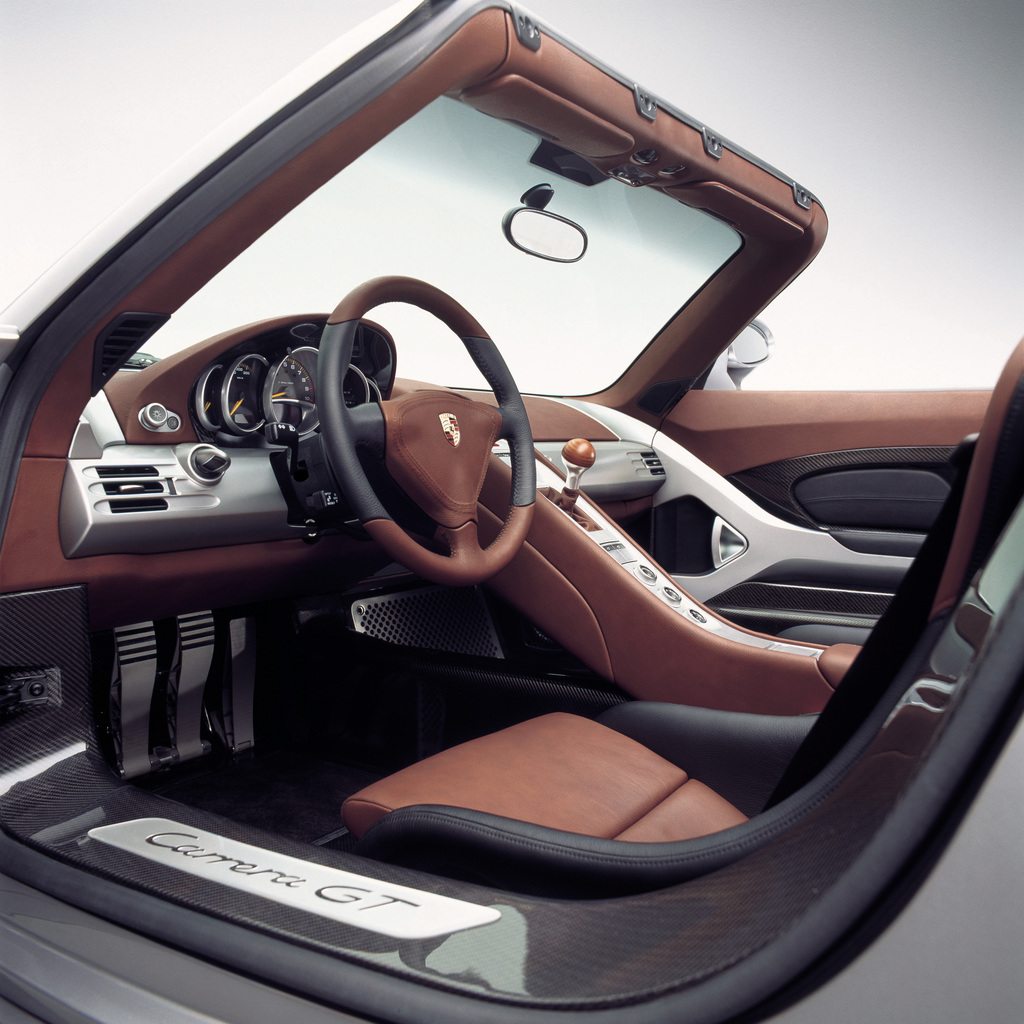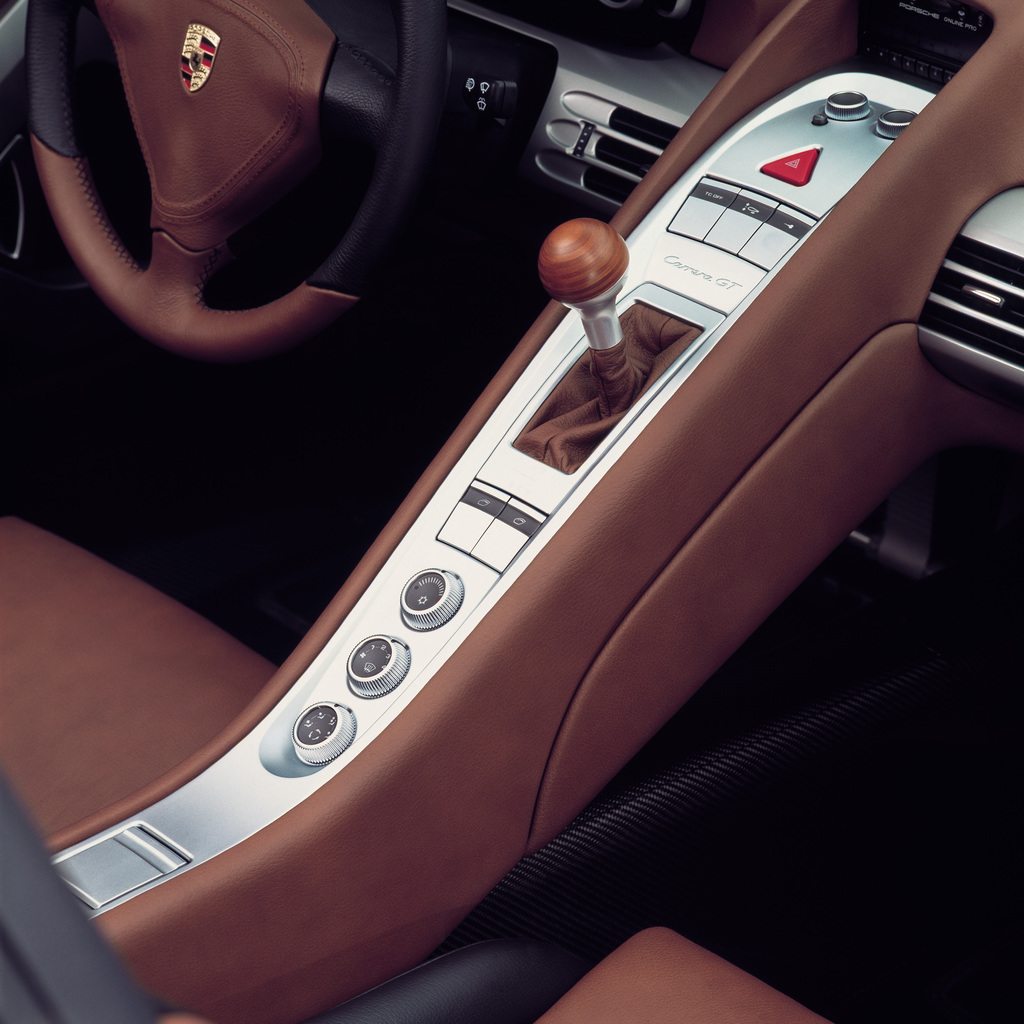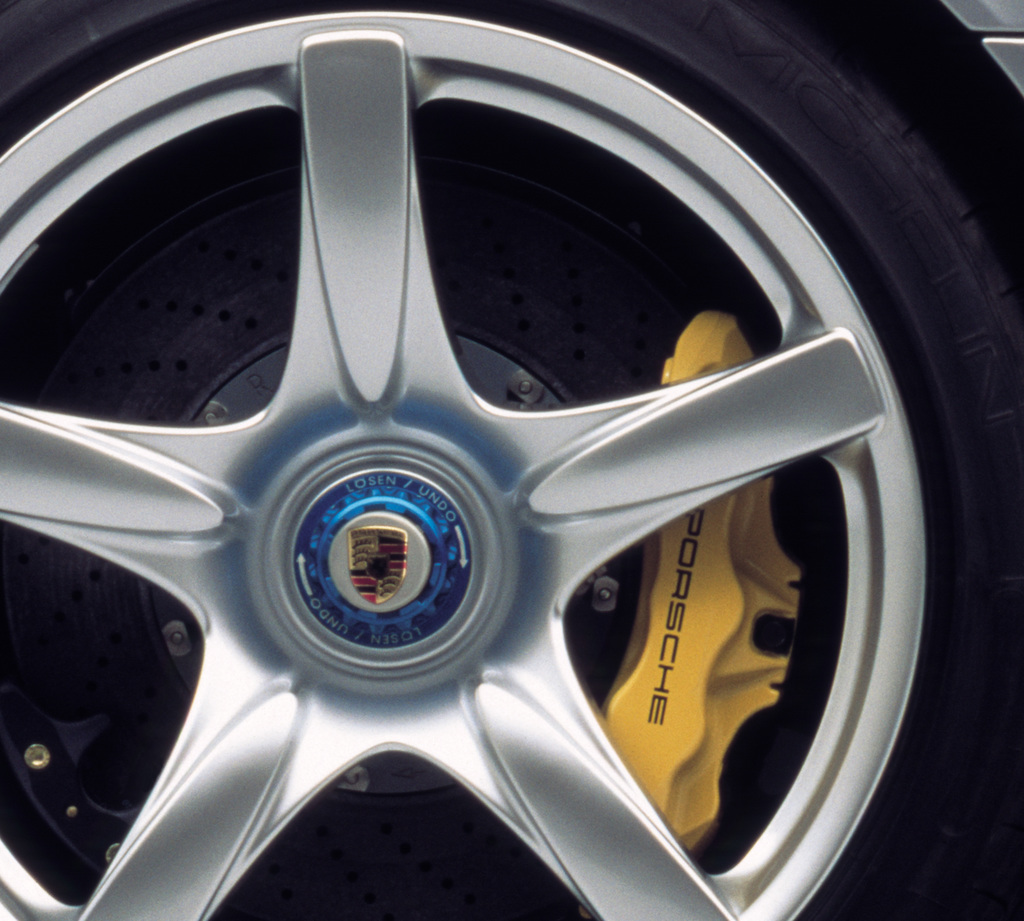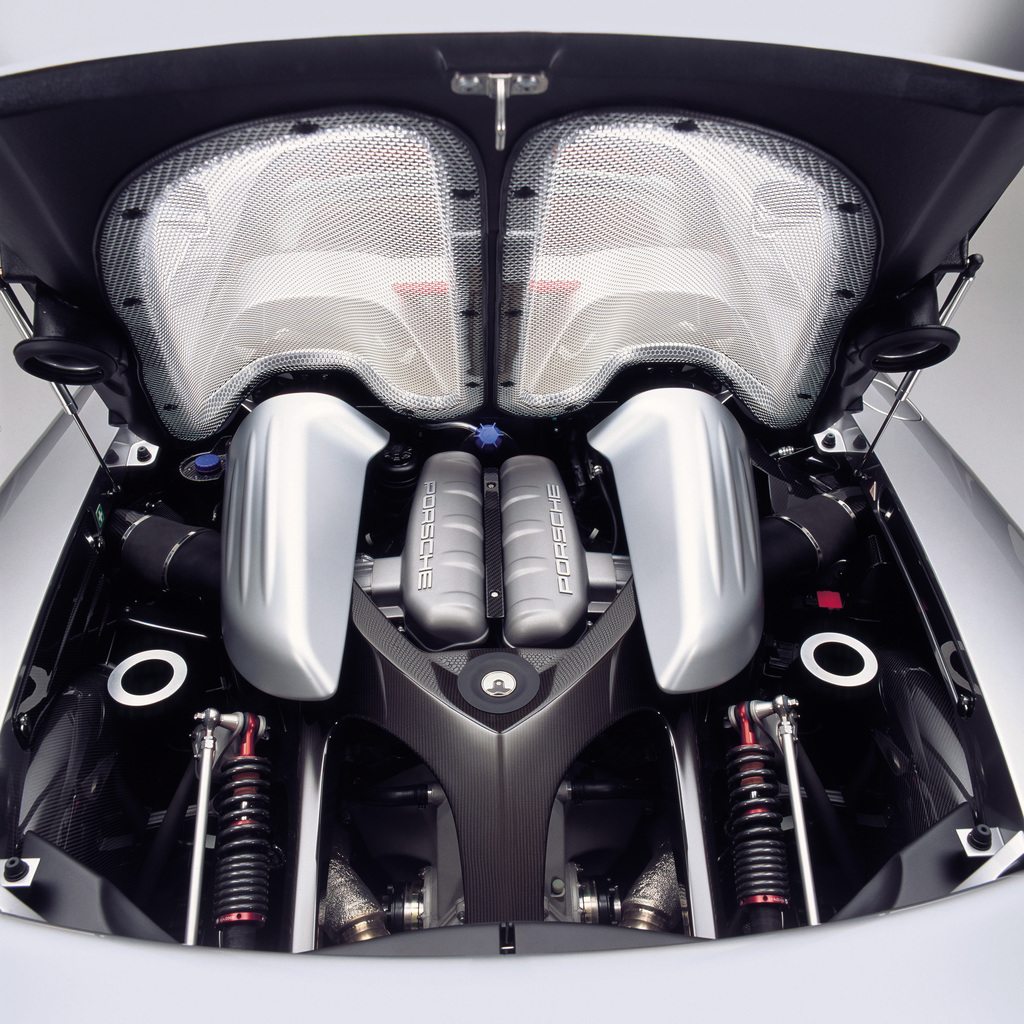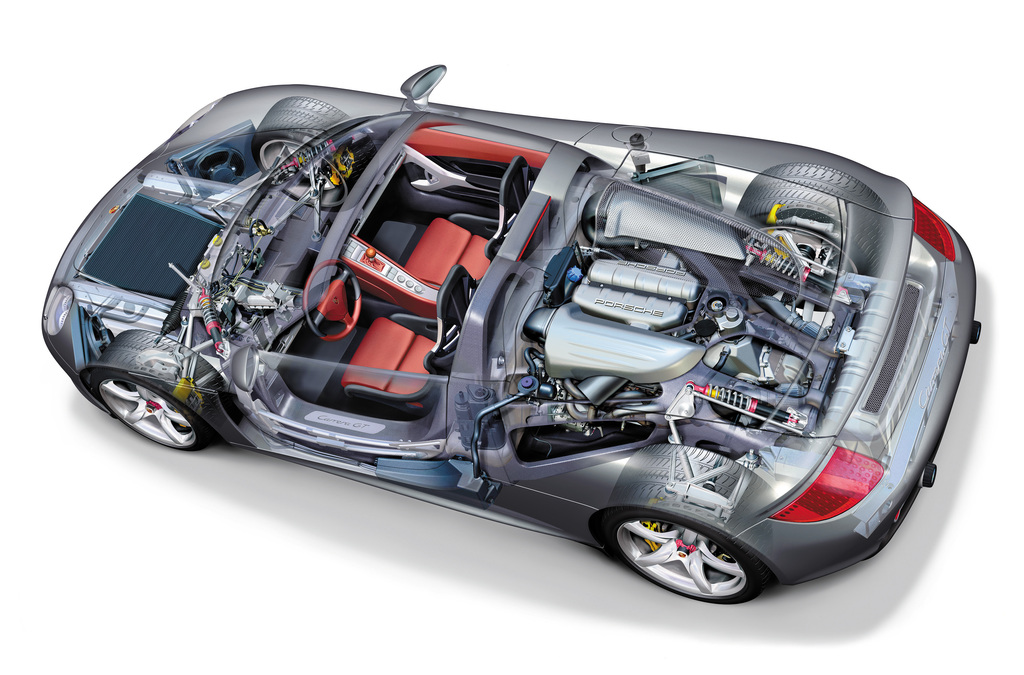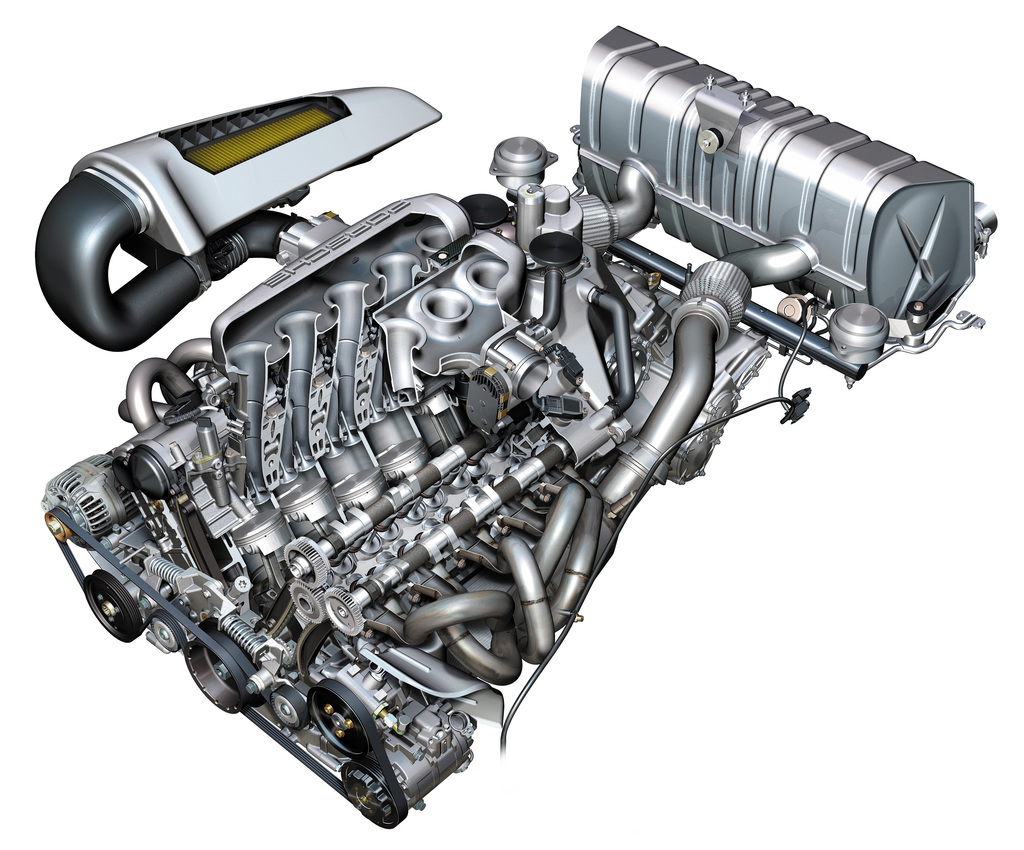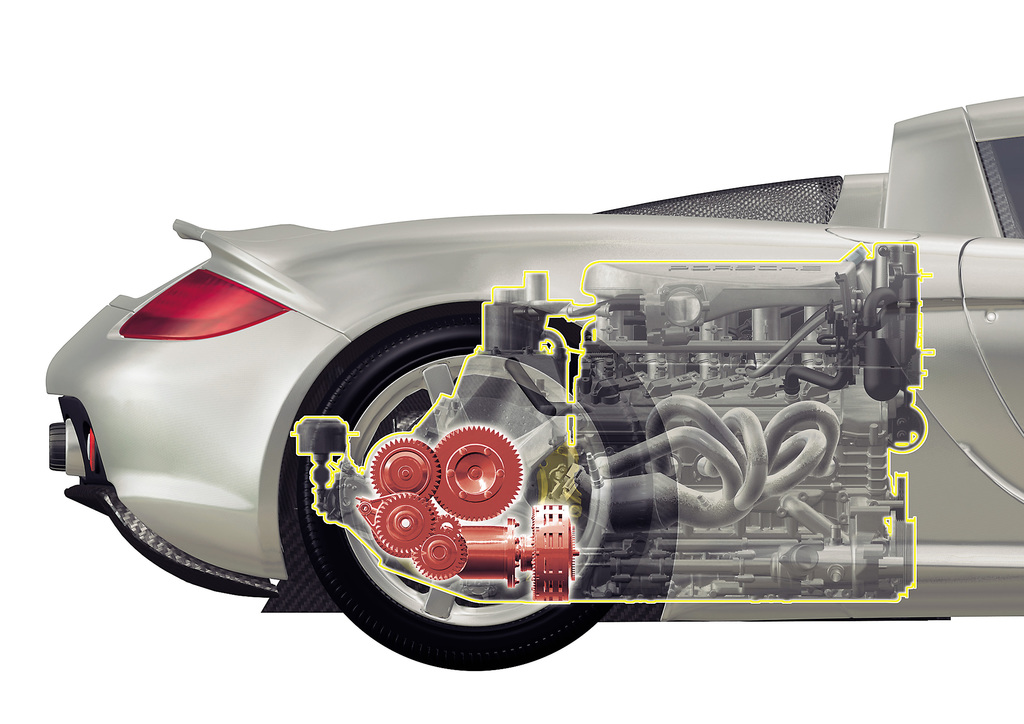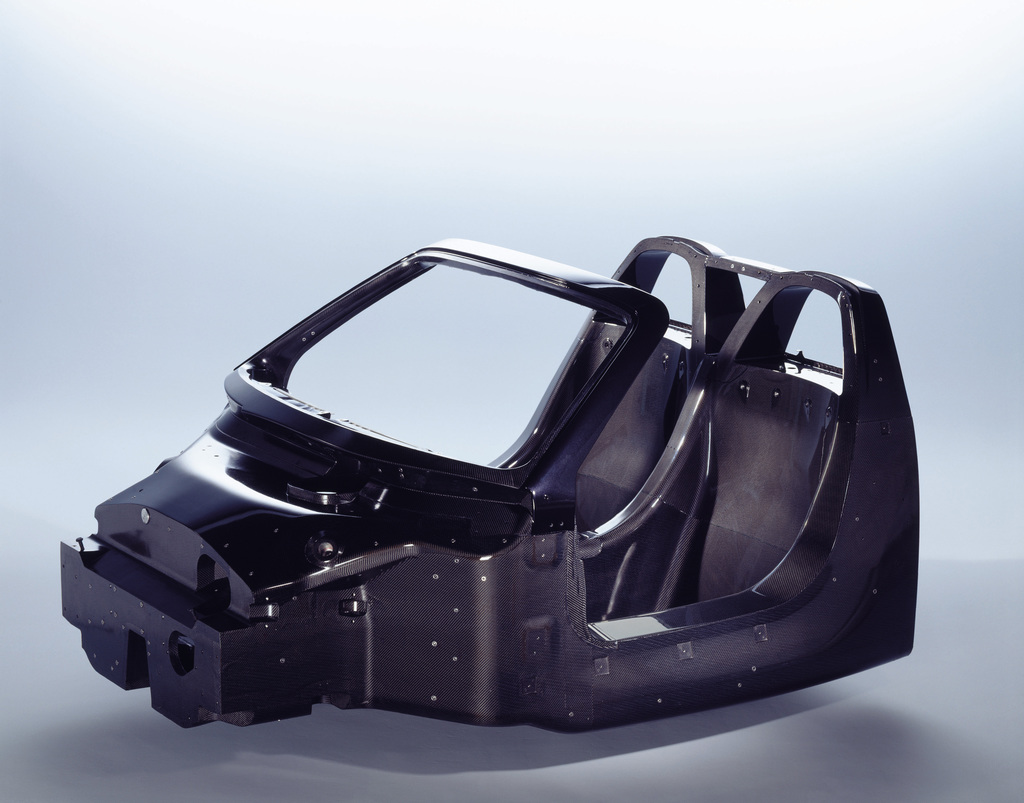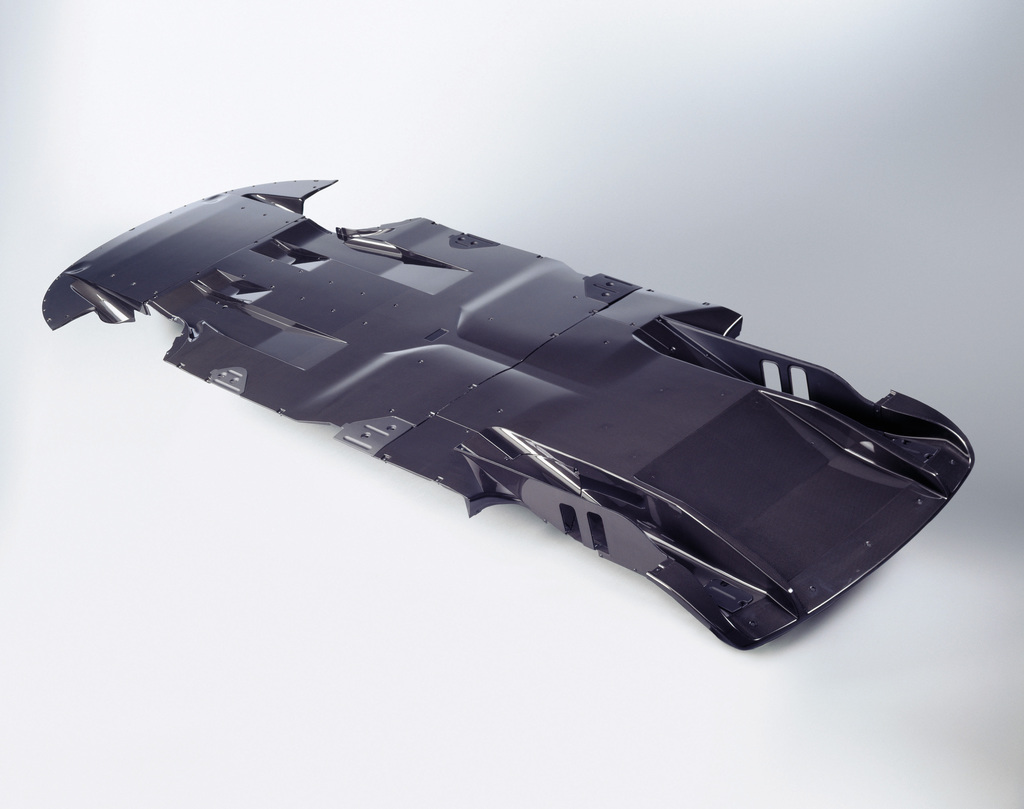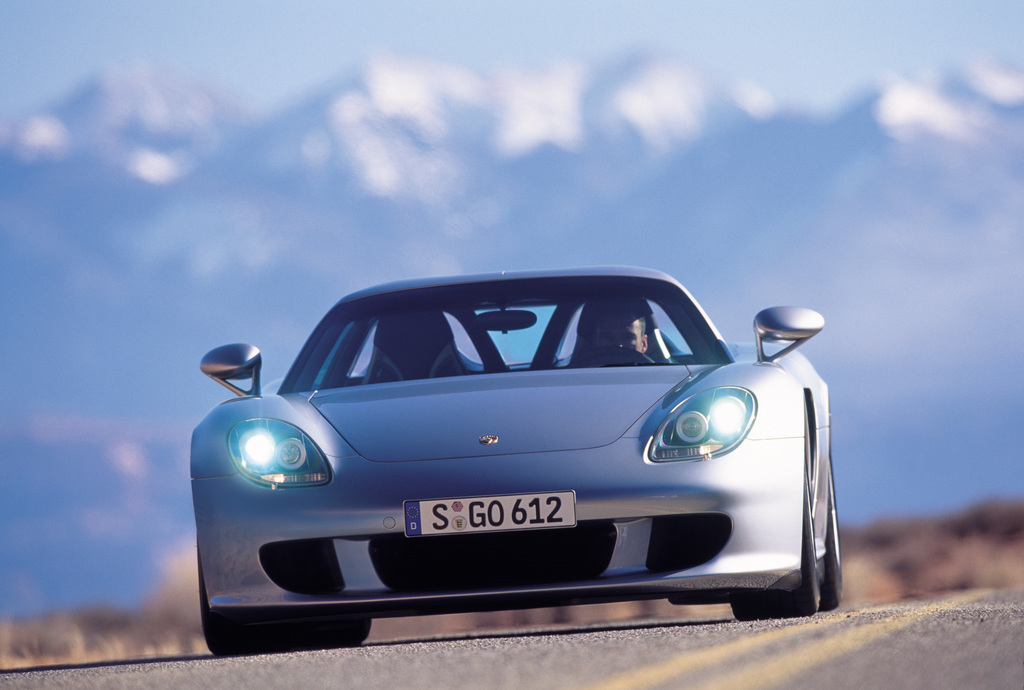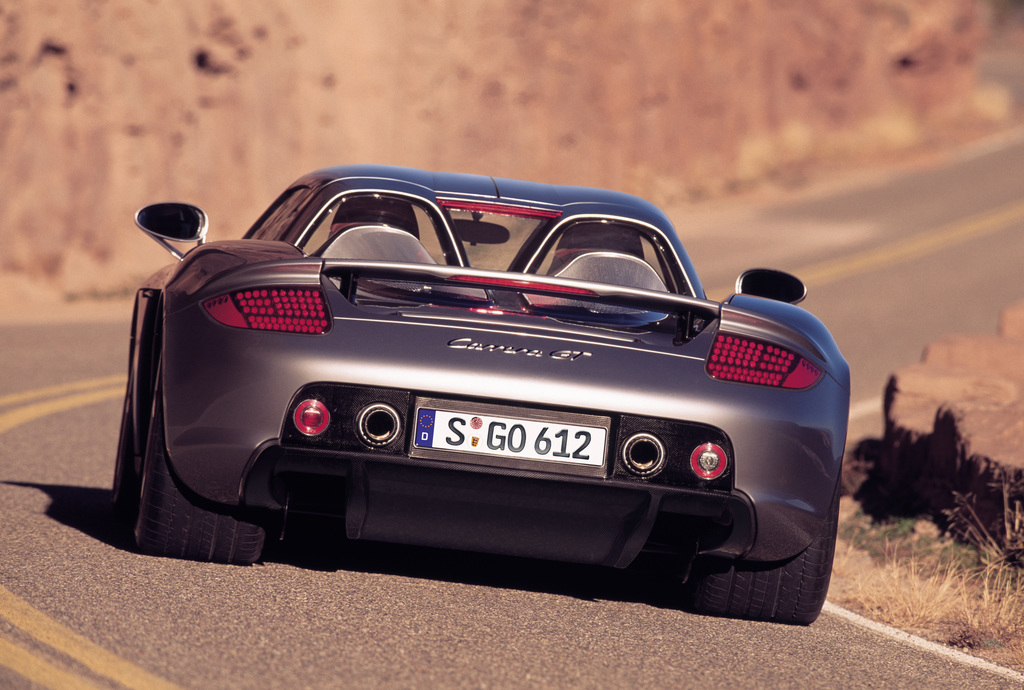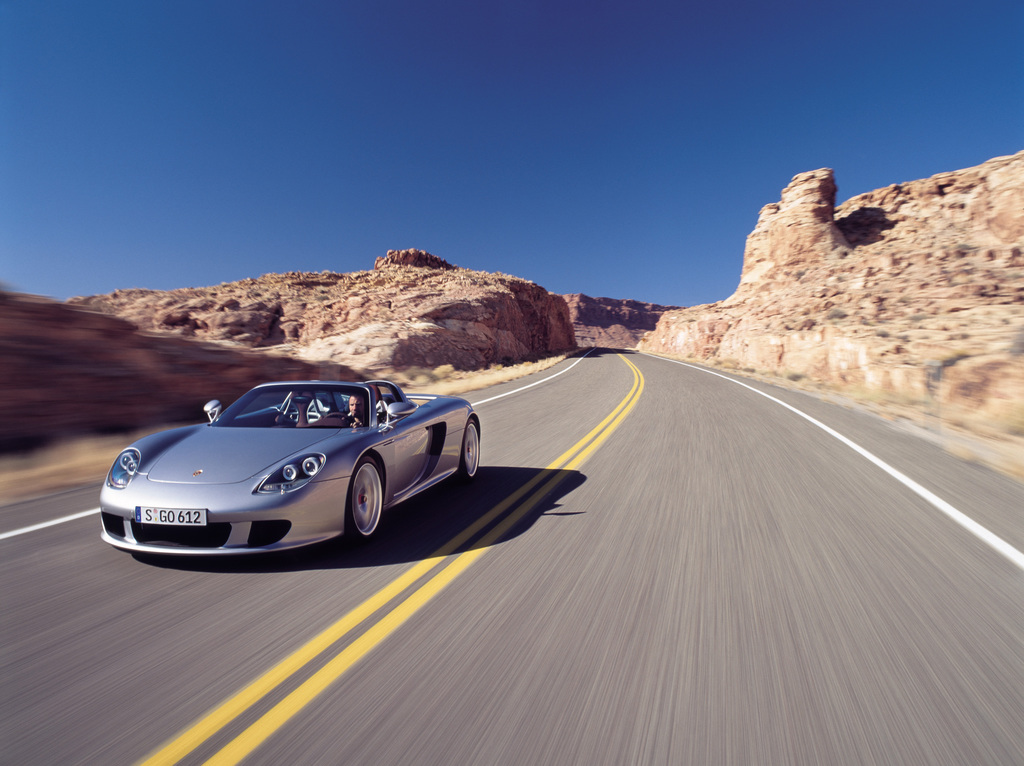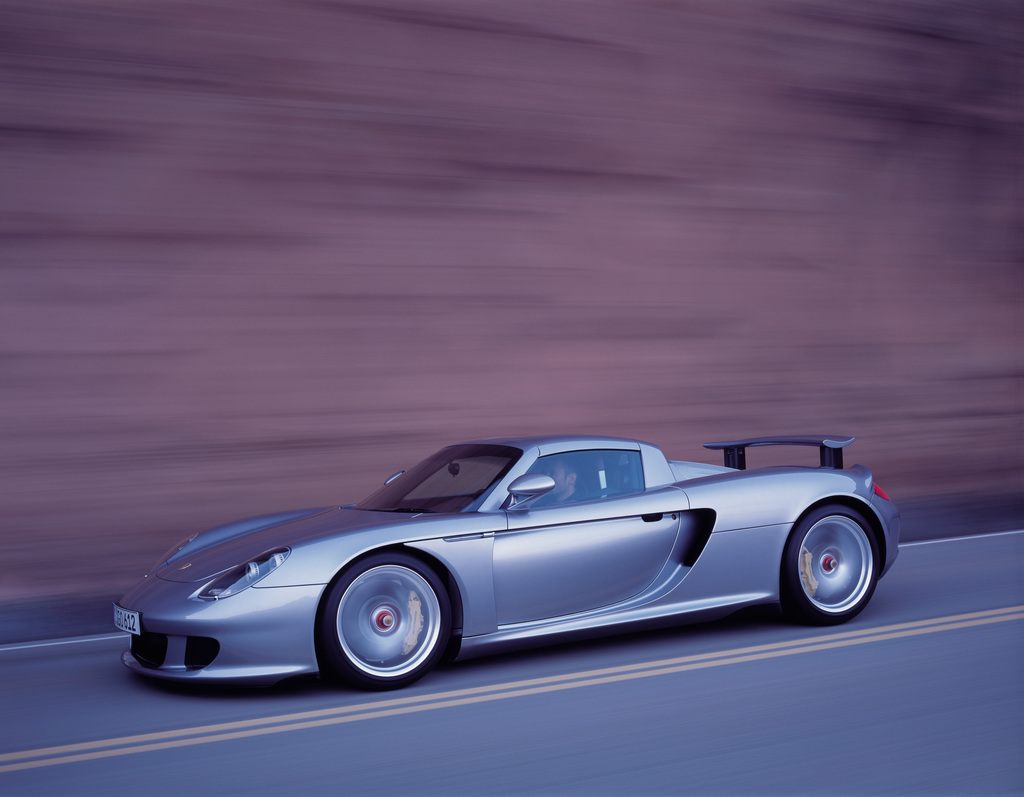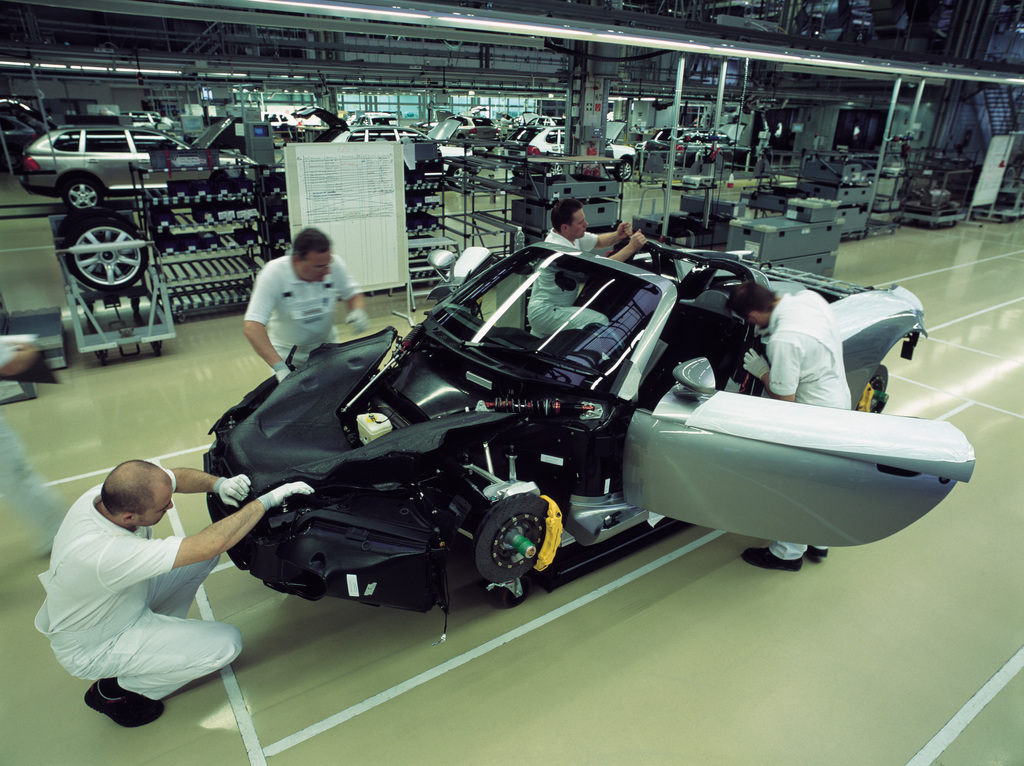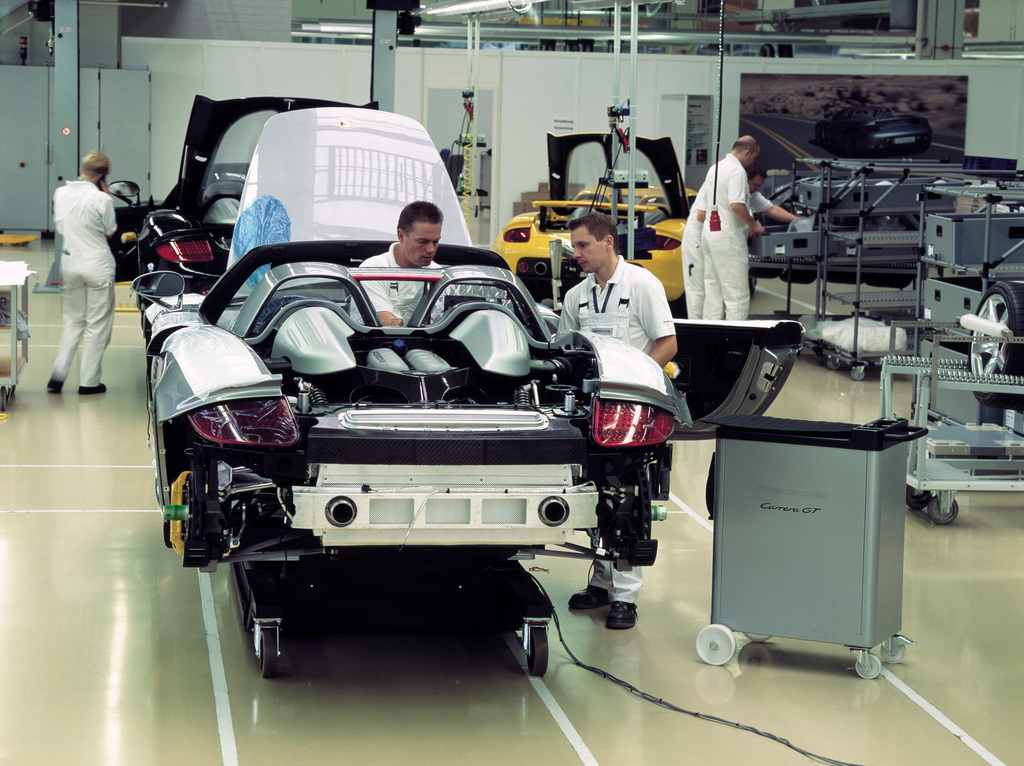Porsche Carrera GT
Released at the 2003 Geneva Auto Show, Porsche’s Carrera GT was a final production version of the concept car first seen at the 2001 Paris Auto Salon. It was Porsche’s first limited production supercar since 959 production stopped in 1988. At the time of launch, it was one of the few available products that rivaled the Ferrari Enzo.
Unlike the 911, which carried the company for four decades, the Carrera GT was complete bottom up design. Its styling was thankfully unchanged from Paris show car and departed from the traditional Porsche shape which the 959 couldn’t escape.
Motivation for the Carrera GT came directly from Porsche’s successful motor sports program and the Porsche WSC-95 Le Mans prototype. After winning Le Mans twice in 1996 and 1997, Porsche revived an old V10 engine for the 1999 season but it was shelved only two days into track testing. Fortunately, the 5.5 liter V10 was used in a one-of 2001 Paris Auto Salon concept car which was received well enough for production to begin two years later. Final Assembly commenced at Porsche’s Leipzig plant and the car sold with an MSRP of $440,000 USD, $515,000 CAD, or €390,000.
Under the skin, the car used many modern hallmarks of motor sport engineering: a carbon fiber chassis, dry sump lubrication, inboard suspension and a mid-mounted engine that was engineered to sit as low as possible to ground. Careful attention was also paid to under tray airflow which could be managed better than the rear-engine 911.
A new V10
Porsche’s V10 engine can trace its roots back to a unit developed in secret by Porsche for the Footwork Formula One team. This development halted in 1992, but was resurrected for a WSC-95 successor that was never completed. Bored out to 5.5 liters, this unit then found its way into the Carrera GT Prototype. When production commenced, it was modified by Porsche engineers to ensure more power and reliability. Such revisions included a larger displacement which offered more torque and driveability.
This engine is placed in the middle of the chassis in a three-point carbon subframe. This is unlike Paris Show Car which featured its V10 as a load bearing structure within the chassis. Had Porsche not used a subframe, noise leakage and vibration would have hampered interior comfort.
The intake system is equipped with Porsche’s VarioCam technology found on the current 996 range. VarioCam continuously adjusts the angle of the intake camshaft to optimize performance and output.
Making the engine as light as possible was a primary goal. A light alloy crankcase and titanium connecting rods help the engine have a weight of 452 lbs (205 kg). Compare this to the Enzo’s V12 weighing in at 496 lbs (225 kg).
6-Speed with a Ceramic Clutch
Power is transferred to the rear wheels through a newly developed six-speed manual transmission. Attached is a special clutch which has a reduced size and weight. Called Porsche Ceramic Composite Clutch (PCCC), this two-plate clutch is made of ceramic composites. Such materials not only help reduce the rotational masses of the clutch by a factor of ten, but offer less wear than conventional material. Combined with a lightweight flywheel, rotational mass of the engine is exceptionally light.
Another highlight of this clutch is its short diameter of only 6.5 inches (165 mm). At such a height, the transmission and engine are very short and mounted low in the chassis. Just how low? Well the crankshaft rotates just 4.0 inches (102 mm) from the floor and the transmission actually sits lower than the rear differential.
CFP Chassis
Providing a basis for the Carrera GT is a carbon fiber monocoque with carbon-fiber-reinforced plastic (CFP) sub frames. Among the carbon body and carbon frame, metal pieces are few and far between. For instance on the chassis, the front rails, a-post inserts, fuel cell and suspension are the only major non-carbon elements.
The chassis is manufactured by the ATR Composites Group. They are specialist Italian carbon fiber manufacturer which coincidentally make the tubs for the Ferrari Enzo. Production at ATR is two complete chassis per day.
A carbon rear sub frame isolates the entire drive train and rear suspension from the chassis. Having the engine completely supported CFP materials is new concept to production car manufacturing. It was concept developed by Porsche’s Motor Racing Division and is subject to patent.
Suspension elements include double wishbones with inboard damper and springs on all four wheels. The inboard dampers and springs are actuated by pushrod and dampers like the setup used by every Formula One constructor.
Braking on all four corners is executed by the capable Porsche Ceramic Composite Brake (PCCB) system and for the first time on fifteen inch rotors. Consisting of ceramic discs and composite pads, the system is lightweight and resistant to corrosion. PCCB reduces the unsprung weight of the braking system by fifty percent. Four channel ABS comes standard.
Attached to the braking system are forged magnesium wheels which weigh less than the tires wrapped around them. Michelin makes the only tire approved for the Carerra GT. They feature a soft compound rubber on the outer one third of the tread. It is suggested by Porsche that these tires need replacement every 15000 miles.
Aerodynamics
A large rear wing provides down force at the rear of the car. As the car reaches 75 mph (120 km/h) it electro-hydraulically raises an additional 6 inches (16 cm) for increased stability. At top speed the combined down force of the front and rear wheels total 639 pounds (290 kgs).
Apart from the wing, most of the Carrera GT’s down force comes from its under tray. The entire tray is manufactured from carbon fiber and is attached to the chassis, engine mounts and crash structure. Creating down force with such a device is efficient as it does not impair the car’s drag coefficient. A diffuser and air flow ducts provide additional ground effect.
Further aerodynamic attention is applied to the lower wishbones. They are made of efficiently shaped steel tubes which do not interfere with the aerodynamics underneath the car.
Electronics
To ensure control under all situations, the Carrera GT has a four channel anti-lock braking system and anti-spin control (ASC) to prevent excessive wheel spin. Traction control is standard. ‘Should he/she wish to enjoy the thrill of dynamic driving of the highest racing standard the driver can switch off the complete traction control function by pressing a button in the centre console.’ says Porsche.
Comfort
Porsche describe the Carrera’s clean interior as a function-oriented ambience and a cockpit free of all extraneous detail. Only high-tech materials such as carbon, magnesium and leather adorn most surfaces.
Information is clearly presented in a classic Porsche instrument cluster which replaces the LCD screen featured on the concept car. The car also uses the 911 steering wheel which doesn’t follow the F1 trend to stick as many functions on the wheel as possible. This old-school approach is a refreshing change, contributing to the GT’s ambiance and ensuring it will remain a timeless design.
Extending into the dash is a centre console covered in magnesium. Attached sits a birch/ash shifter which is the only piece of wood found in this carbon-laden car. It specifically pays homage to Porsche’s 917 which sported a balsa-wood gear lever. Balsa was the optimum material for the job, it was extremely light, but most importantly added to the character of the 917.
Amenities such a Bose stereo system and air conditioning are optionally offered.
For closed top driving, two carbon fiber panels can be attached to the roof. At a low weight of just 6.4 lbs (2.4 kgs) each, these panels are easily removable and can be stored in the front luggage compartment.
Enzo vs Carrera
Comparison between the Carrera GT and Ferrari Enzo is inevitable. Both entered the market at the top of the product range and both place heavy emphasis on driver-oriented driving, but each executes this philosophy in a different way.
Where the Enzo has three driving modes, and a huge bevy of electronic systems, the Carrera is stripped down to basic performance. This is largely due to the fact that the Carrera only has a 6-Speed Manual whereas the Enzo is equipped with a paddle-shift, computer controlled, 6-speed sequential. Getting back to basics is somewhat cheaper, since the Carrera GT was $444,400 when new compared to the $660 000 USD Enzo.
With regards to pure performance, the Enzo does have 48 more horsepower (35.8 kW), and weighs 33 lbs (15 kgs) less which would make it win on any straight. The Carrera GT on the other hand, offers much more down force and might possibly catch up in the turns. In any case, if either car is superior, the margin is so narrow that it’s more a question of driver skill.
Conclusion
Despite announcing a total production of 1500 units, only 1270 came from the factory in Saxony. Porsche stopped after airbag regulations changed in the US. It is also important to mention that the Carrera GT wasn’t meant to become the fastest road legal supercar. Had Porsche tried to chase the McLaren’s performance figures, production (planned at 1500 cars), profitability and comfort would have suffered.
Most cars came in the standard colors of Guards Red, Fayence Yellow, Basalt Black, GT Silver or Seal Grey, but custom colors were available.
Sources & Further Reading
Davis, Matt. ‘Porsche Carrera GT’. Octane, December 2003.
Harris, Chris. ‘The Dazzling Carrera’. Autocar, September 2003.
Kacher, Georg. ‘The Porsche We’ve All Been Waiting For’. CAR.
Meaden, Richard. ‘Super Ferry Animal’. EVO, November 2003.
Simister, John. ‘Gunning for Enzo’. EVO.
Stout, Pete. ‘Porsche’s Pinnacle’. Excellence, December 2003.
Porsche Carrera GT Images
Porsche Carrera GT Videos
In Detail
| type | Series Production Car |
| production years | 2003 – 2007 |
| built at | Leipzig, Germany |
| production | 1270 |
| price $ | $ 440,000 |
| price £/td> | £323,000 |
| predeccesor | 1998 Porsche 911 GT1 ’98 Straßenversion |
| succeccesor | 2013 Porsche 918 Spyder |
| engine | Aluminum, 68 Degree, Water Cooled V10 w/Dry Sump Lubrication |
| position | Mid Longitudinal |
| aspiration | Natural |
| valvetrain | DOHC 4 Valves per Cyl w/VarioCam |
| fuel feed | Sequential Multi-Point Fuel Injection |
| displacement | 5733 cc / 349.8 in³ |
| bore | 98 mm / 3.86 in |
| stroke | 76 mm / 2.99 in |
| compression | 12.0:1 |
| power | 451.2 kw / 605 bhp @ 8000 rpm |
| specific output | 105.53 bhp per litre |
| bhp/weight | 438.41 bhp per tonne |
| torque | 589.78 nm / 435 ft lbs @ 5750 rpm |
| redline | 8400 |
| body / frame | Carbon Fibre Body over Carbon Fiber Reinforced Plasitc Frame |
| driven wheels | RWD w/ASR 5.7, LSD |
| front tires | 265/35ZR19 Michelin Pilot Sport 2 |
| rear tires | 335/30ZR20 Michelin Pilot Sport 2 |
| front brakes | Internally Vented & Cross Drilled Ceramic Composite Discs w/6-Piston Calipers, ABS |
| rear brakes | Internally Vented & Cross Drilled Ceramic Composite Discs w/6-Piston Calipers, ABS |
| front wheels | F 48.3 x 24.1 cm / 19 x 9.5 in |
| rear wheels | R 50.8 x 31.8 cm / 20 x 12.5 in |
| steering | Rack & Pinion w/Power Steering |
| f suspension | Double Wishbones w/Inboard Springs & Damperse |
| r suspension | Double Wishbones w/Inboard Springs & Dampers |
| curb weight | 1380 kg / 3042 lbs |
| wheelbase | 2730 mm / 107.5 in |
| front track | 1612 mm / 63.5 in |
| rear track | 1587 mm / 62.5 in |
| length | 4613 mm / 181.6 in |
| width | 1920 mm / 75.6 in |
| height | 1166 mm / 45.9 in |
| transmission | 6-Speed Manual |
| tran clutch | Two-Plate Ceramic Dry Clutch |
| gear ratios | 3.20:1, 1.87:1, 1.07:1, 0.90:1, 0.75:1 |
| final drive | 4.44:1 |
| top speed | ~329.9 kph / 205 mph |
| 0 – 60 mph | ~3.9 seconds |
| 0 – 100 mph | ~7.1 seconds |
| 0 – 1/4 mile | ~11.4 seconds |
| 0 – 100 kph | ~3.7 seconds |
| fuel capacity | 92 litres or 24.29 gal. |


